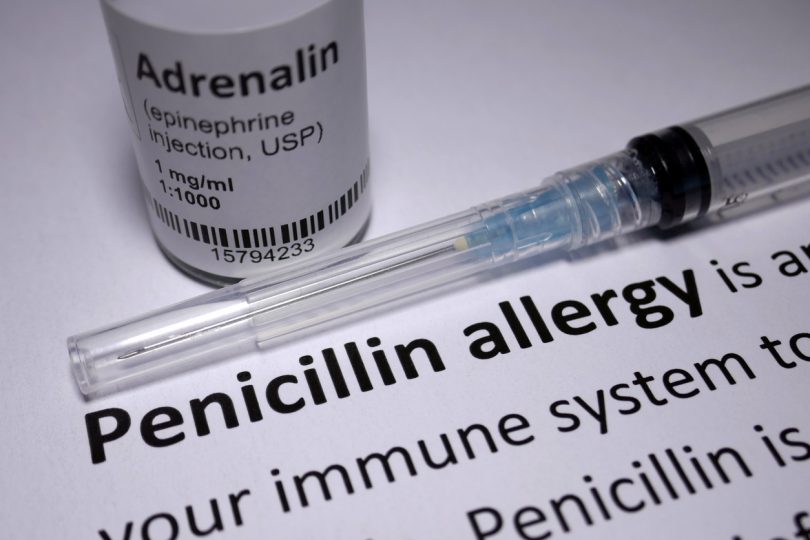Penicillin, one of the first-known antibiotics, is an inexpensive medication used for a wide variety of bacterial infections. At least 1 in 10 individuals self-report a penicillin allergy.
An allergic reaction to penicillin results from the immune system’s misidentification of penicillin as a harmful substance — the body develops an IgE-antibody to the medication. Severe allergic reactions may present as hives, skin rashes, wheezing and swelling. Many individuals have side effects to penicillin that are mischaracterized as an allergy, however. Once an allergy to penicillin is placed on a patient’s allergy list, it is rarely removed. Recent studies suggest that approximately 95 percent of the more than 32 million people in the United States reporting an allergy to penicillin can safely be treated with proper testing.
Of those diagnosed with a true penicillin allergy, half may outgrow it within a five-year period, according to the American Academy of Asthma, Allergy and Immunology. A board-certified/eligible allergist can provide a safe, two-step penicillin skin test followed by an in-office oral challenge to rule out severe allergic reaction. This may allow many patients to remove penicillin from their list.
Those patients who test positive should inform health care workers, such as physicians and dentists, and consider wearing an allergy necklace or bracelet.



